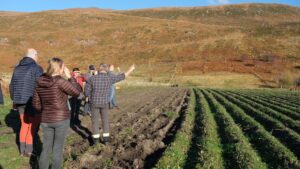Abstract/Description
The Local Action Group (LAG) MontagnAppennino, within the RUSTIK Living Lab framework, explores the role of small and medium-sized enterprises (SMEs) in fostering sustainable forest management in the Garfagnana and Media Valle del Serchio regions. With 88% of the area covered by forests, this mountain region faces multiple challenges, including land abandonment, fragmented governance, limited economic diversification, and underutilized forest resources. However, SMEs, cooperatives, and community-led initiatives are proving instrumental in addressing these issues by generating local employment, fostering innovation, and enhancing ecosystem services such as carbon sequestration, biodiversity conservation, water regulation, and climate mitigation. To address data fragmentation and governance gaps, the Living Lab conducted an extensive data experiment, integrating geospatial mapping, stakeholder engagement, and local datasets. This approach provided critical insights into forest functions, economic opportunities, and policy needs. Key findings include: • Persistent challenges in coordination and innovation due to complex regulations, fragmented property ownership, and a lack of updated forest management data. • A growing interest in sustainability credits, beyond traditional carbon credits, as an innovative mechanism to incentivize ecosystem services and forest conservation. • The significant potential of forest-based enterprises in driving economic diversification, particularly in timber production, biomass energy, eco-tourism, and non-wood products (e.g., chestnuts, mushrooms, truffles). • The need for stronger collaborative governance models, such as forest consortia and cooperative management, to improve resource management and access to funding. The Living Lab experience highlights the importance of multifunctional forestry in balancing economic, social, and environmental needs. This contribution demonstrates how integrated policy frameworks, enhanced data accessibility, and SME engagement can transform forest-dependent mountain economies, fostering resilience, sustainable livelihoods, and stronger rural-urban linkages. This research underscores the importance of multi-stakeholder cooperation in leveraging forest resources for regional development, offering replicable strategies for other mountainous areas facing similar socio-economic and environmental challenges.


